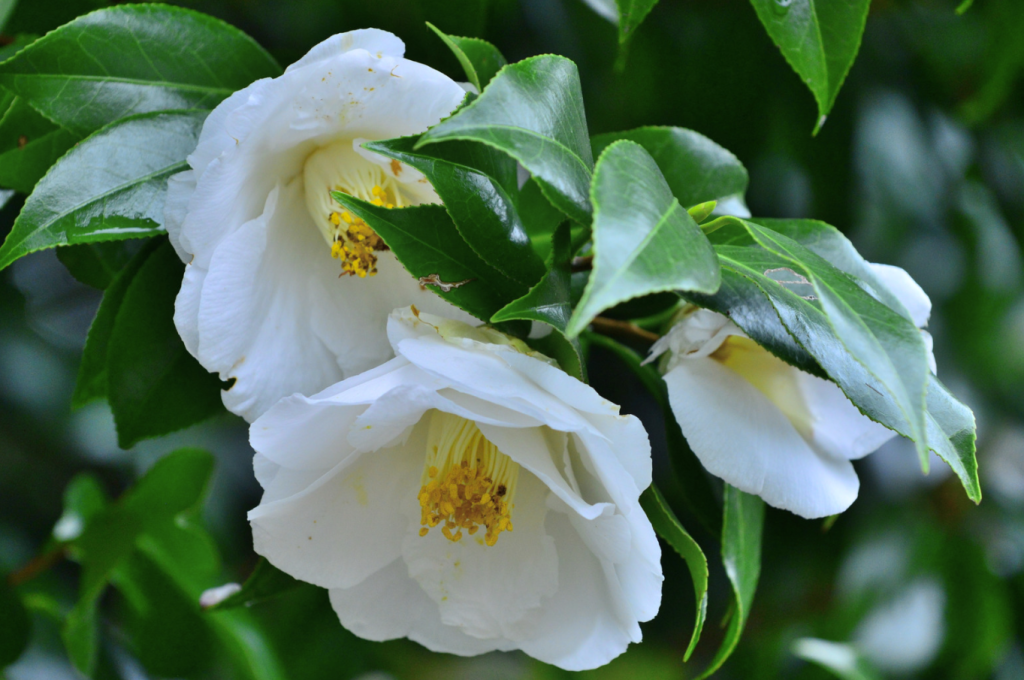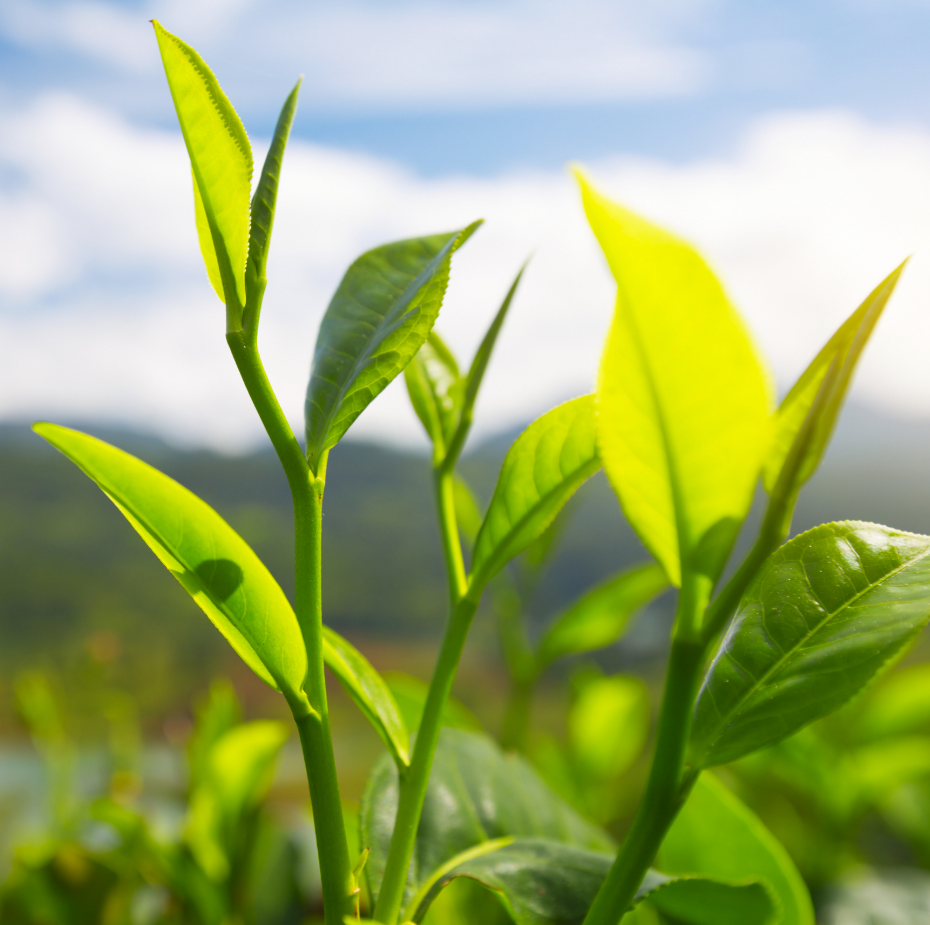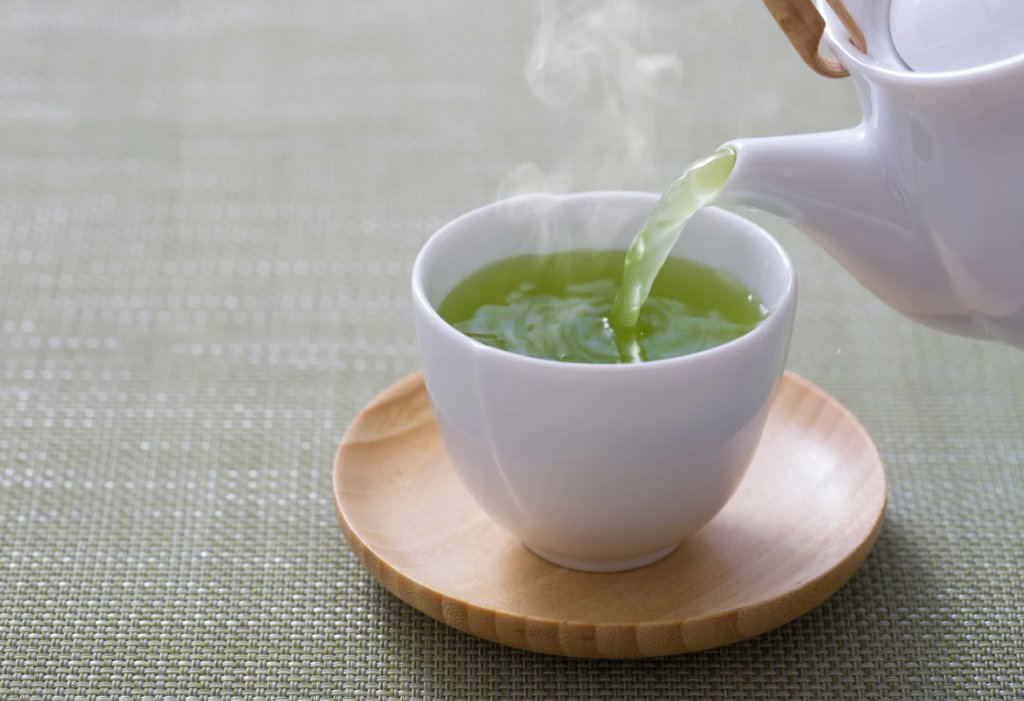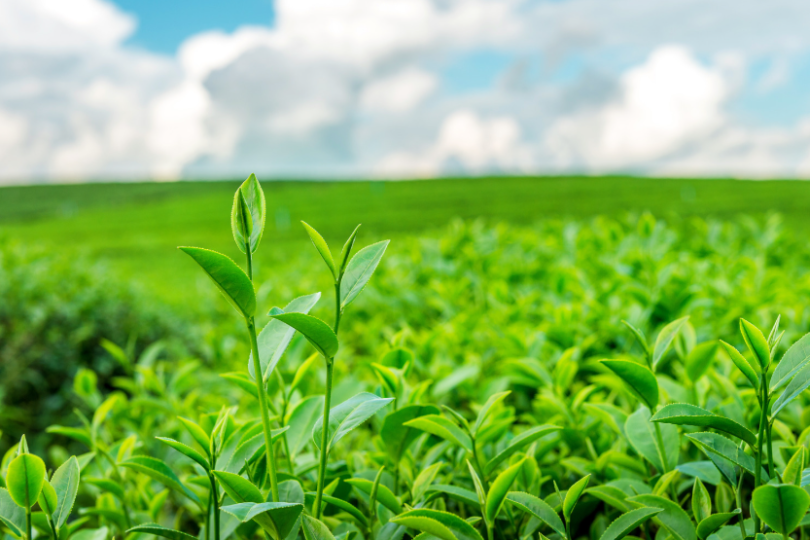Jedwards is now offering Green Tea Extract under item # P4600! Read more to learn about green tea extract & why it is in the spotlight!
The Tea on Green Tea Extract
Green Tea Extract is produced from Camellia Sinensis Leaves, or the leaves of the (Green) Tea plant. The majority of green tea is cultivated and exported from China where it first originated. The US, EU, & Ghana account for the highest global demand for green tea extract, driven by its growth across dietary supplements, nutraceuticals, beverages, cosmetics, and coveted skincare products.

Green Tea Extract – How is it Produced?
Following selection, green tea leaves undergo an extraction process to obtain the valuable compounds responsible for the benefits this infamous plant is prized for. After further processing, the antioxidant-rich solution is ultimately concentrated, dehydrated, and finally pulverized, resulting in a light-brown powder.
Applications for Green Tea Extract
Green tea extract is water-soluble, a highly beneficial trait of ingredients utilized in beverages, especially for health-focused consumers. It has a mild yet characteristic herbal aroma with a desirable level of antioxidant content. Its ease of incorporation further promotes this powder in skincare formulations. It easily dissolves in light-weight serums, creams, toners and products intended to be misted or sprayed onto the skin. Further, it is quickly absorbed when incorporated into oil-in-water emulsions (water-based formulations) potentially resulting in enhanced skincare results.



What makes Green Tea Extract Special?
To understand the benefits of green tea extract, we need to examine its components. The vast majority of green tea extract powders are analyzed for percentages of the following components: Polyphenols, Epigallocatechin Gallate (EGCG ) & Catechin. Each of these falls under the category of antioxidants.

The Hubbub Over Antioxidants
The human body is truly amazing! In our DNA, we possess a wealth of blueprints responsible for the countless processes that handle the lifelong maintenance of growth & repair. It is this cellular intelligence that allows our bodies to take advantage of certain molecular compounds to boost health. One such class of compounds that the body is adept at using is antioxidants.
Antioxidants, which are a class of compounds that play a role in defense against free-radical damage, can be thought of in two categories—prevention and repair. While enzymatic antioxidants neutralize oxygen-containing free radicals (to prevent damage to cells), non-enzymatic antioxidants support recovery of tissues by scavenging free radicals and mediating inflammation, supporting the healing processes natural to the body. Polyphenols, Epigallocatechin Gallate (EGCG ) & Catechin are all non-enzymatic antioxidants.
Polyphenols, Epigallocatechin Gallate (EGCG ) & Catechin
Polyphenols are a broad class of natural compounds found in plants. Flavonoids are a type of phenolic defense compound. There are six different types of flavonoids found in food, and each kind is broken down by your body in a different way. Catechins are a specific type of flavonoid, while Epigallocatechin gallate (EGCG ) is a type of Catechin. EGCG is the major active compound in green tea. The numerous health benefits associated with drinking green tea are due to its EGCG content.

Only a few decades ago, green tea was largely seen in the US as a somewhat unfamiliar beverage. It has since exploded in popularity across the world and today, remains highly regarded as a health and wellness ingredient. Interest and research into green tea has resulted in excitement and demand for green tea extract, which is considered highly valuable in its concentrated form. A better understanding of health and disease by the average consumer has driven enthusiasm for green tea extract. Its antioxidant-rich components, such as polyphenols, catechins, and EGCG, suggest a wide range of potential benefits, making it an exciting ingredient for formulators in both the beverage and personal-care industries as well as its incorporation in nutraceuticals.

